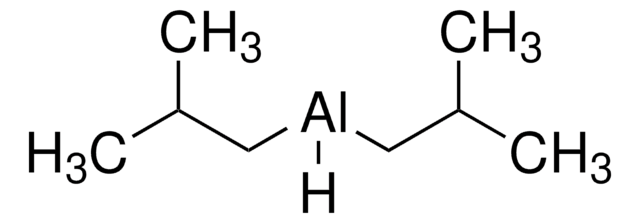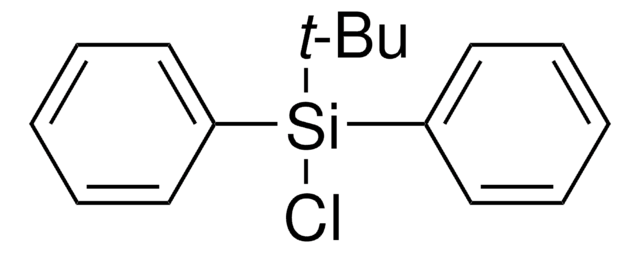Key Documents
214965
Diisobutylaluminum hydride solution
1.0 M in heptane
Synonim(y):
DIBAL, DIBAL-H
About This Item
Polecane produkty
Postać
liquid
przydatność reakcji
reagent type: reductant
stężenie
1.0 M in heptane
gęstość
0.731 g/mL at 25 °C
ciąg SMILES
CC(C)C[AlH]CC(C)C
InChI
1S/2C4H9.Al.H/c2*1-4(2)3;;/h2*4H,1H2,2-3H3;;
Klucz InChI
AZWXAPCAJCYGIA-UHFFFAOYSA-N
Szukasz podobnych produktów? Odwiedź Przewodnik dotyczący porównywania produktów
Zastosowanie
- Synthesis of α-acetoxy ethers by reduction and subsequent acetylation of esters.
- Synthesis of coniferyl, sinapyl, and p-coumaryl alcohol by selective reduction of corresponding cinnamate esters.
- Reduction of secondary phosphine oxides (SPOs) to the corresponding phosphines.
- DIBAL-H can also be used in the hydroalumination of alkene and alkynes.
Hasło ostrzegawcze
Danger
Zwroty wskazujące rodzaj zagrożenia
Zwroty wskazujące środki ostrożności
Klasyfikacja zagrożeń
Aquatic Acute 1 - Aquatic Chronic 1 - Asp. Tox. 1 - Eye Dam. 1 - Flam. Liq. 2 - Pyr. Liq. 1 - Skin Corr. 1B - STOT SE 3 - Water-react 1
Organy docelowe
Central nervous system
Zagrożenia dodatkowe
Kod klasy składowania
4.2 - Pyrophoric and self-heating hazardous materials
Klasa zagrożenia wodnego (WGK)
WGK 2
Temperatura zapłonu (°F)
30.2 °F
Temperatura zapłonu (°C)
-1 °C
Wybierz jedną z najnowszych wersji:
Masz już ten produkt?
Dokumenty związane z niedawno zakupionymi produktami zostały zamieszczone w Bibliotece dokumentów.
Klienci oglądali również te produkty
Nasz zespół naukowców ma doświadczenie we wszystkich obszarach badań, w tym w naukach przyrodniczych, materiałoznawstwie, syntezie chemicznej, chromatografii, analityce i wielu innych dziedzinach.
Skontaktuj się z zespołem ds. pomocy technicznej









